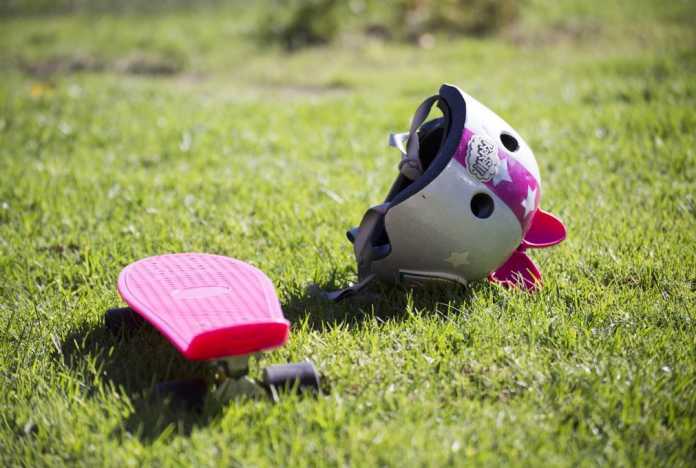
Emergency Medical Services (EMS) would like to encourage parents and caregivers to ensure their backyard play areas are made safe for children. Although direct supervision is the best method to reduce the chance of injury, ensure your play equipment in your yard is in good repair and is suitable for the age and skill of the children using it. Check play equipment often; replace or repair any worn or broken parts. Set up play equipment over top a 9-inch layer of shock-absorbing material such as sand, wood chips, or pea gravel which extends 6 feet out in all directions from the play area.
Water hazards
- Drowning contributes to unintentional injury-related death among children ages one to four;
- Children can drown in just a few centimetres of water if it covers their mouth and nose;
- Ensure all backyard swimming pools are fenced. The fence must be at least 1.8 metres (*) high and have a self-latching, self-closing, lockable gate. (*Alberta Building Code)
Lawn and garden tools
- Keep young children away from outdoor power equipment;
- Serious burns may result from touching hot engine surfaces;
- Ensure that all sharp tools, fuel, chemicals, and other hazardous substances are stored in a secure, locked area. A simple latch may not be sufficient.
Insect bites and stings
- Minimize the risk of attracting insects by not wearing strong perfumes or scented lotions;
- Avoid wearing brightly coloured clothing outdoors;
- Consider destroying or relocating hives and nests situated near your home;
- To avoid injury through inadvertently stepping on a stinging insect always wear footwear outdoors;
- If your child has received an ‘EpiPen, Junior’ prescription from your physician (for anaphylactic reactions only) ensure they understand when and how to use it;
- If your child experiences a severe reaction to an insect sting, or other environmental cause, seek medical attention, or call 9-1-1.









